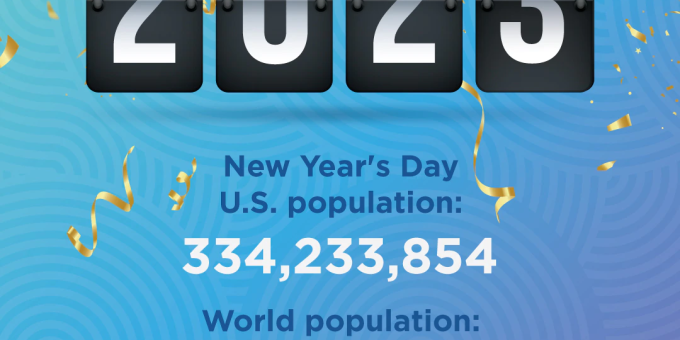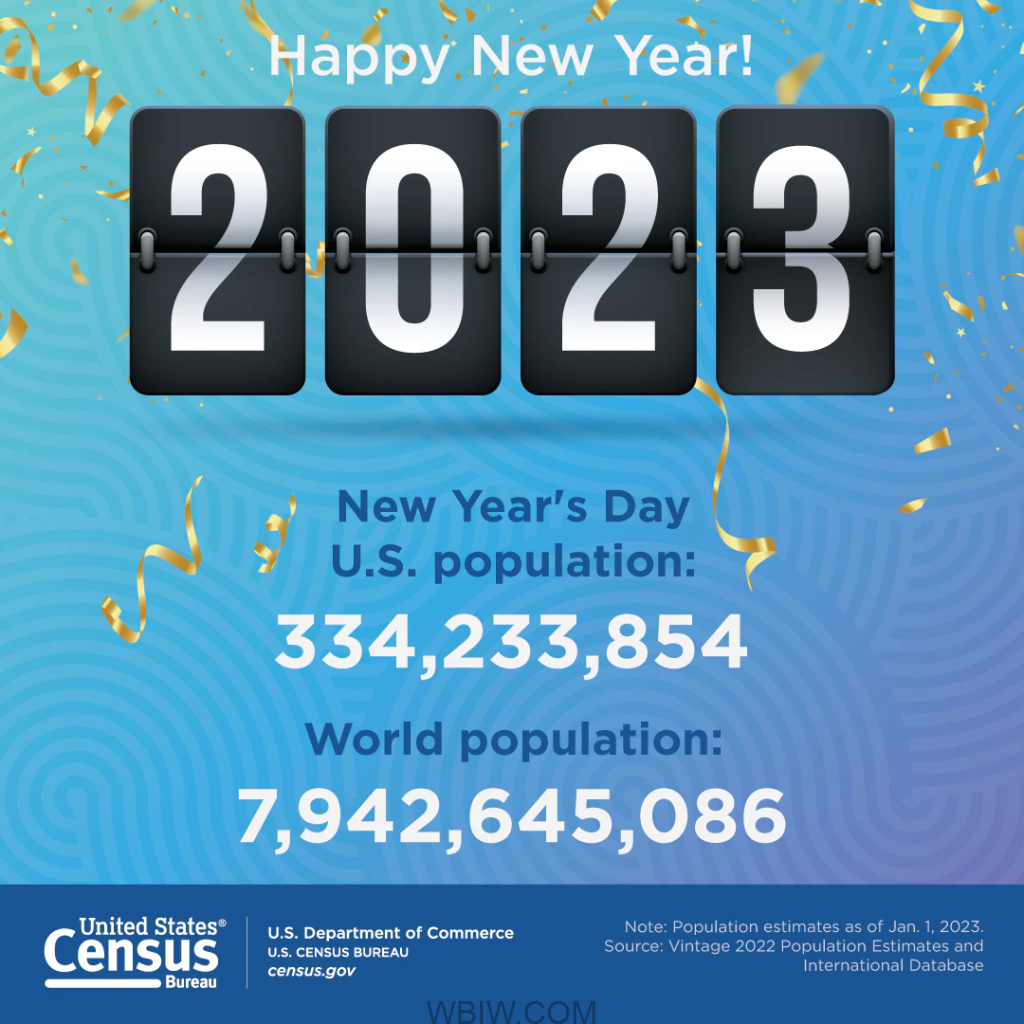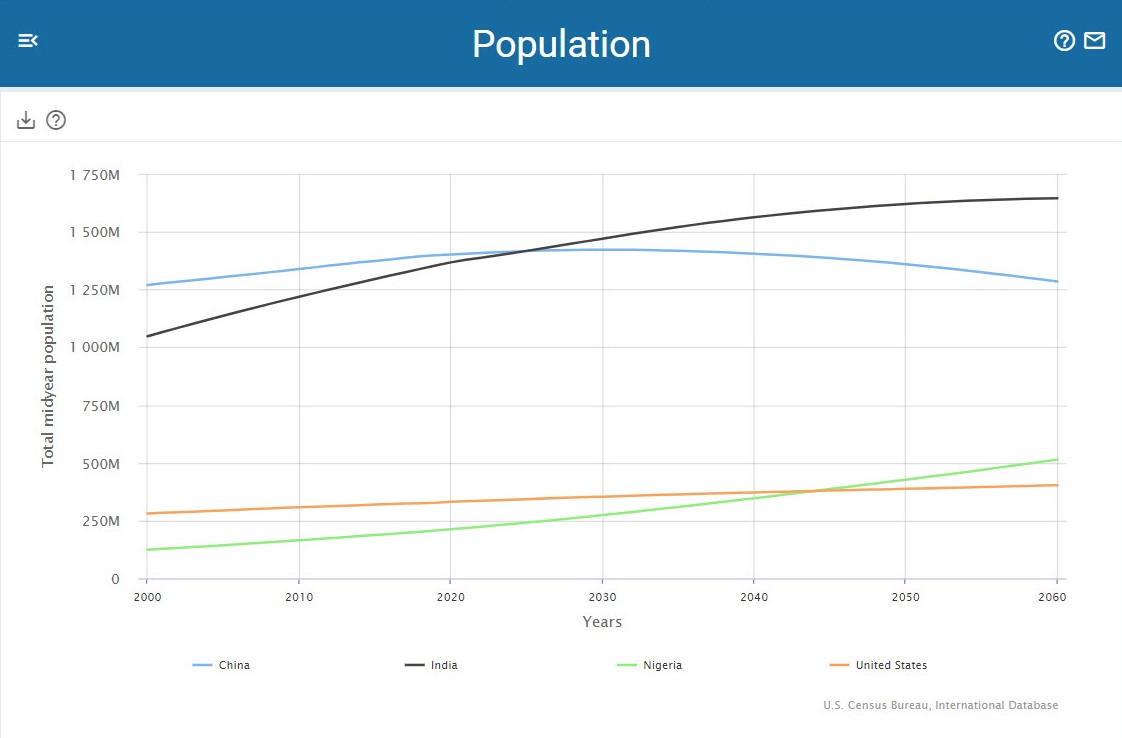
INDIANA – As our nation prepares to ring in the new year, the U.S. Census Bureau projects the United States population will be 334,233,854 on Jan. 1, 2023.
This represents an increase of 1,571,393, or 0.47%, from New Year’s Day 2022, and 2,784,573, or 0.84% since Census Day (April 1) 2020.
In January 2023, the nation is expected to experience 1 birth every 9 seconds and 1 death every 10 seconds. Meanwhile, net international migration is expected to add 1 person to the U.S. population every 32 seconds.

The combination of births, deaths and net international migration increases the U.S. population by 1 person every 27 seconds.
The projected world population on Jan. 1, 2023, is 7,942,645,086, an increase of 73,772,634, or 0.94%, from New Year’s Day 2022. During January 2023, 4.3 births and 2.0 deaths are expected worldwide every 1 second.
Population Estimates From the U.S. and World Population Clock
The Census Bureau’s Population Clock displays simulated real-time growth of the U.S. and world populations. The U.S. clock shows the population by age (0 to 100+) and sex, and the most populous and highest-density states, counties, and cities. The world clock shows the most populous countries, as well as the top U.S. export and import partners.
Population Projections From the International Database
Created in the 1960s, the Census Bureau’s International Database (IDB) now produces projections for 227 countries and areas with populations of 5,000 or more. Population size (by single year of age and sex) and components of change (fertility, mortality, and migration) are available for each calendar year through 2100 (through 2060 for the United States).
In 2025, the IDB Trends (see the Population chart) show India passing China in total population (around 1.42 billion each) to become the world’s most populous country. The United States will still be third. However, Nigeria is projected to surpass it in 2045 and become the world’s third-most populous country with about 388 million people.
The IDB is an interactive data tool with the Country Dashboard providing data on 227 countries and areas. There are tables corresponding with five topics — Demographic Overview, Components of Population Growth, Fertility, Mortality and Migration — and the option to create a table from a custom report.
Also available is the ability to map measures such as total population, fertility, mortality, and migration, and display population by age in pyramids or tables and trends by country from 1950 to 2100 (2060 for the United States).
Did the World Population Reach 8 Billion on November 15, 2022?
The answer differs among organizations that provide worldwide assessments of demographic trends. The United Nations (U.N.) reported that the world population reached 8 billion on November 15, 2022, while the Census Bureau’s IDB projects the 8 billion milestones won’t be reached until Fall 2023.
Both the Census Bureau and the U.N. prepare population estimates and projections for other countries and areas informed by census and survey data, vital statistics, and information from multinational organizations that collect and publish data for these countries. However, our underlying demographic assumptions are not always the same, and we release new data at different times of the year.
Despite such differences, global population growth is slowing. It took about 12 years to grow from 7 billion to 8 billion. But it is estimated that to grow from 8 billion to 9 billion will take about 15 years.
Information: Derick C. Moore is a senior communications specialist in the Census Bureau’s Communications Directorate.




